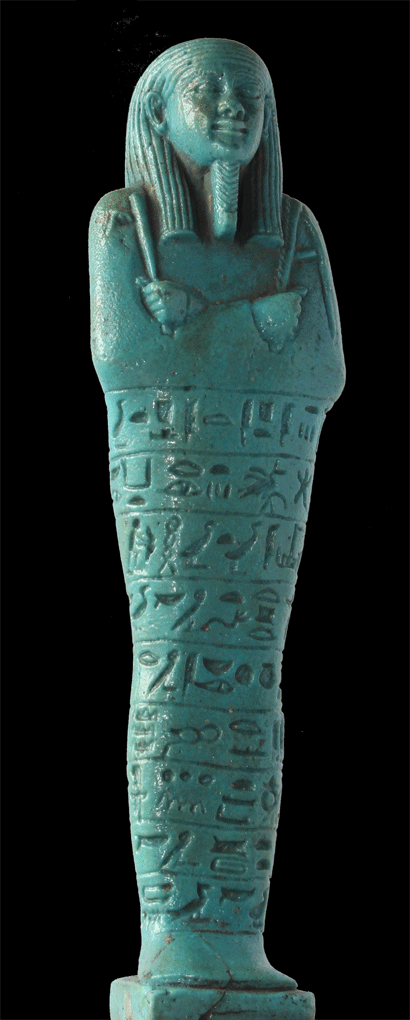|
|
|||||||
|
|
|
|
|
|
|
|
|
|
|
|||||||||||
|
|
|
|
|
|
|
|
|
|
|
|
|
|
|
||
|
|
|
|
|
|
|||||||||||||||||||||||||||||||||||||||||||||||||||||||||||||||||||||||||||||||||||||||||||||||||||||||||||||||||||||||||||||||||||||||||||||||
|
New Kingdom
By the New Kingdom (1570-1070 BC) the role of shabtis as servants or workers for the deceased was
more or less fully implemented and the number of shabtis placed in burials
gradually increased with as many as ten by the early 19th Dynasty with the
number increasing still further thereafter. The shabtis were often made in
stone or wood, the latter sometimes with attractive polychrome decoration
similar to coffins of the period. The use of faience increased in popularity.
Many shabtis were inscribed with Chapter 6 of the Book of the Dead - the shabti
spell that stipulated their agricultural duties. A number of shabtis from the
early 18th Dynasty do not carry the tools needed to enable them to do the tasks
required of them
[65]-[67] but they probably had model tools provided for them [68]-[70].
Kings also now started to include shabtis as part of their funerary equipment.
The first was Ahmose II (1570-1546 BC) the first king of the 18th Dynasty. His fine limestone shabti shows the king wearing the royal nemes headdress with
a uraeus, symbol of kingship, at the front. The torso is inscribed with a
version of Chapter 6 of the Book of the Dead [71]. Note that no tools are added in the modelling.
Anyway, it is apparent that kings gradually had increasingly more shabtis buried
with them than the nobility or the elite of society. Amenhotep II (1453-1419
BC) was the first king to be buried with a considerable number of shabtis. 88
were found in his tomb in the Valley of the Kings (KV 35). 48 are made of
serpentine. They wear a striated nemes headdress associated with kings with a
uraeus at the front above the forehead. They have their arms crossed and the
hands carry ankh signs symbolizing life. A long divine beard is worn on the
chin of each figure. They are inscribed with Chapter 6 of the Book of the Dead
[72]-[78].There are eight shabtis made of sandstone, three of alabaster, 17 of faience,
and 12 of wood that are painted without hands being shown. There were also eight complete shabti coffins and 22 lids made of wood. Note
that none of the royal shabtis so far carry implement or tools.
Although it had been looted, the tomb of Thutmose IV (1419-1386 BC) in the
Valley of the Kings (KV 43), contained a number of shabtis. They are made of
blue glazed faience except for a fragmentary wooden shabti and an extremely
fine lower torso fragment that is made of white faience with a purple faience
inscription being Chapter 6 of the Book of the Dead [79]-[84]. However, the most interesting development is that several of Thutmose IV’s shabtis show a pair of hoes and baskets being carried on the front of the
figures for the first time although the king was also buried with a number of
model implements. Several very finely modelled faience shabti coffins were also
found in the tomb.
It was during the reign of Thutmose IV that shabtis for private persons also
started to include hoes and baskets on the front of their shabtis. They were
either painted or they were incorporated into the modelling [85]-[88].
Around 60 shabtis are known for Amenhotep III (1386-1349 BC) . They are
predominantly made of stone which seems to have been carefully selected for its
colour [89]-[93]. During a brief interlude in the New Kingdom known as the Amarna Period,
Akhenaten (1350-1334 BC) introduced a new monotheistic religion based on the
worship of the sun disc, the Aten. There are numerous fragments of shabtis
known for him. The few surviving shabtis for private persons generally have
softer features reflecting the more restrained art of the time. Akhenaten’s shabtis were not provided with agricultural tools. Instead, he chose the
ankh-sign, symbol of life, or the crook and flail, symbols of kingship. Some
private shabtis, of which there are only about 40 or so known, are inscribed
with a unique formula invoking the Aten through which resurrection was to be
obtained. However, they still retain the more usual implements but the role of
shabtis at this time is not completely clear
[94]-[98].
Tutankhamen (1570-1293 BC) was responsible for reinstating the old religious
ideology of earlier times. He was buried in the Valley of the Kings (KV 62)
with 418 shabtis, some of which are exceptional works of art. They are made in
a variety of materials – wood (some being gilded), quartzite, calcite, limestone (white and yellow
coloured), black granite, and a range of coloured faience [99]-[109]. A few of the shabtis carry tools and baskets on the front, but most carry a
crook and flail, or two flails or ankh-symbols. Tutankhamen was buried with
1866 miniature agricultural tools - hoes, picks, yokes, and baskets - made of
copper, faience, and wood.
Towards the end of the 18th Dynasty other tools were provided in addition to a
pair of hoes and seed baskets. These are water pots carried on a yoke, and brick
moulds [110]-[112]. The hoes are shown as two types – broad-bladed and narrow-bladed. A new type of figure was introduced alongside
mummiform shabtis towards the end of the 18th Dynasty. These show the deceased
wearing the dress of daily life with the characteristic short–sleeved tunic, kilt and projecting apron usually with a finely detailed
bipartite wig. Many carry attributes such as tyet amulets or djed pillar
amulets while others carry a pair of hoes [113]-[116]. In the 20th dynasty the shabtis wearing the dress of daily life gradually took
on the role of ‘overseer’ figures that became the norm in the Third Intermediate Period.
Seti I (1291-1278 BC) had in excess of 700 shabtis buried with him. These are
mostly made of juniper wood that was inscribed with the shabti spell, but there
are also others known that are uninscribed. They were coated in a layer of
black varnish. Others were made of faience and the larger ones are spectacular
in the quality of their workmanship. Other shabtis are known in alabaster and
glazed steatite [117]-[122].
A group of shabtis peculiar to the 20th Dynasty are those referred to as ‘contours perdus,’ literally meaning ‘lost contour’. They are always made of alabaster and often have details added in coloured
wax. Their shape is always very simple and the feet taper to a point. Several
of the Ramesside kings had this type of shabti [123]-[124]. The simplistic outline and shape, even in royal examples, probably reflects
the general decline in Egypt following the reign of Ramesses IV when the
country became unstable with a succession of weak rulers. Other shabtis of this
type are also found for private individuals and there are also anonymous
examples.
Many shabtis in the New Kingdom wear what we call today, 'bling.' There are
broad collars – some very elaborate, while others are simpler and they often end in a row of
drop–shaped beads. Some shabtis wear a simple necklace with a pendant – perhaps a pectoral or a heart amulet. There are bracelets, either one or two,
and in the mid and late 18th Dynasty ear lobes are sometimes pierced and
earrings are occasionally shown [125].
|
|
||||||||||||||||||||||||||||||||||||||||||||||||||||||||||||||||||||||||||||||||||||||||||||||||||||||||||||||||||||||||||||||||||||||||||||||
|
Select any group to enlarge
|
|
||||||||||||||||||||||||||||||||||||||||||||||||||||||||||||||||||||||||||||||||||||||||||||||||||||||||||||||||||||||||||||||||||||||||||||||
|
|
|||||||||||||||||||||||||||||||||||||||||||||||||||||||||||||||||||||||||||||||||||||||||||||||||||||||||||||||||||||||||||||||||||||||||||||||
|
|
|||||||||||||||||||||||||||||||||||||||||||||||||||||||||||||||||||||||||||||||||||||||||||||||||||||||||||||||||||||||||||||||||||||||||||||||
|
|
|||||||||||||||||||||||||||||||||||||||||||||||||||||||||||||||||||||||||||||||||||||||||||||||||||||||||||||||||||||||||||||||||||||||||||||||
|
[65]
|
[66]
|
[67]
|
[68]
|
[69]
|
[70]
|
|
|||||||||||||||||||||||||||||||||||||||||||||||||||||||||||||||||||||||||||||||||||||||||||||||||||||||||||||||||||||||||||||||||||||||||
|
|
|||||||||||||||||||||||||||||||||||||||||||||||||||||||||||||||||||||||||||||||||||||||||||||||||||||||||||||||||||||||||||||||||||||||||||||||
|
|
|||||||||||||||||||||||||||||||||||||||||||||||||||||||||||||||||||||||||||||||||||||||||||||||||||||||||||||||||||||||||||||||||||||||||||||||
|
|
|||||||||||||||||||||||||||||||||||||||||||||||||||||||||||||||||||||||||||||||||||||||||||||||||||||||||||||||||||||||||||||||||||||||||||||||
|
|
|||||||||||||||||||||||||||||||||||||||||||||||||||||||||||||||||||||||||||||||||||||||||||||||||||||||||||||||||||||||||||||||||||||||||||||||
|
|
|||||||||||||||||||||||||||||||||||||||||||||||||||||||||||||||||||||||||||||||||||||||||||||||||||||||||||||||||||||||||||||||||||||||||||||||
|
[71]
|
[72]
|
[73]
|
[74]
|
[75]
|
[76]
|
[77]
|
[78]
|
|
|||||||||||||||||||||||||||||||||||||||||||||||||||||||||||||||||||||||||||||||||||||||||||||||||||||||||||||||||||||||||||||||||||||||
|
|
|||||||||||||||||||||||||||||||||||||||||||||||||||||||||||||||||||||||||||||||||||||||||||||||||||||||||||||||||||||||||||||||||||||||||||||||
|
|
|||||||||||||||||||||||||||||||||||||||||||||||||||||||||||||||||||||||||||||||||||||||||||||||||||||||||||||||||||||||||||||||||||||||||||||||
|
|
|||||||||||||||||||||||||||||||||||||||||||||||||||||||||||||||||||||||||||||||||||||||||||||||||||||||||||||||||||||||||||||||||||||||||||||||
|
[79]
|
[80]
|
[81]
|
[82]
|
[83]
|
[84]
|
[85]
|
[86]
|
[87]
|
[88]
|
|
|||||||||||||||||||||||||||||||||||||||||||||||||||||||||||||||||||||||||||||||||||||||||||||||||||||||||||||||||||||||||||||||||||||
|
|
|||||||||||||||||||||||||||||||||||||||||||||||||||||||||||||||||||||||||||||||||||||||||||||||||||||||||||||||||||||||||||||||||||||||||||||||
|
|
|||||||||||||||||||||||||||||||||||||||||||||||||||||||||||||||||||||||||||||||||||||||||||||||||||||||||||||||||||||||||||||||||||||||||||||||
|
|
|||||||||||||||||||||||||||||||||||||||||||||||||||||||||||||||||||||||||||||||||||||||||||||||||||||||||||||||||||||||||||||||||||||||||||||||
|
[89]
|
[90]
|
[91]
|
[92]
|
[93]
|
[94]
|
[95]
|
[96]
|
[97]
|
[98]
|
|
|||||||||||||||||||||||||||||||||||||||||||||||||||||||||||||||||||||||||||||||||||||||||||||||||||||||||||||||||||||||||||||||||||||
|
|
|||||||||||||||||||||||||||||||||||||||||||||||||||||||||||||||||||||||||||||||||||||||||||||||||||||||||||||||||||||||||||||||||||||||||||||||
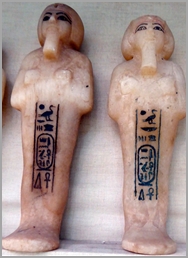 |
|
||||||||||||||||||||||||||||||||||||||||||||||||||||||||||||||||||||||||||||||||||||||||||||||||||||||||||||||||||||||||||||||||||||||||||||||
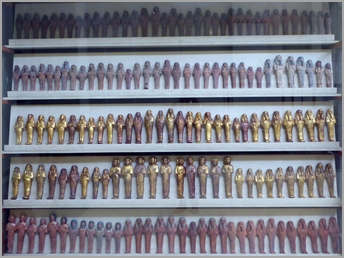 |
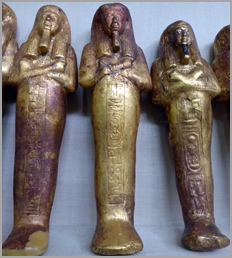 |
|
|||||||||||||||||||||||||||||||||||||||||||||||||||||||||||||||||||||||||||||||||||||||||||||||||||||||||||||||||||||||||||||||||||||||||||||
|
|
|||||||||||||||||||||||||||||||||||||||||||||||||||||||||||||||||||||||||||||||||||||||||||||||||||||||||||||||||||||||||||||||||||||||||||||||
|
|
|||||||||||||||||||||||||||||||||||||||||||||||||||||||||||||||||||||||||||||||||||||||||||||||||||||||||||||||||||||||||||||||||||||||||||||||
|
[99]
|
[100]
|
[101]
|
|
||||||||||||||||||||||||||||||||||||||||||||||||||||||||||||||||||||||||||||||||||||||||||||||||||||||||||||||||||||||||||||||||||||||||||||
|
|
|||||||||||||||||||||||||||||||||||||||||||||||||||||||||||||||||||||||||||||||||||||||||||||||||||||||||||||||||||||||||||||||||||||||||||||||
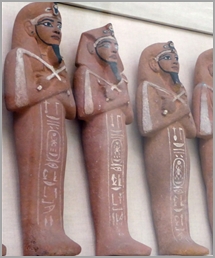 |
 |
 |
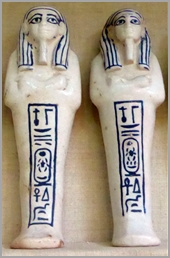 |
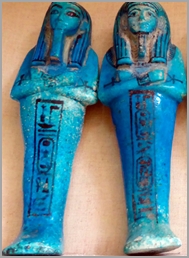 |
|
||||||||||||||||||||||||||||||||||||||||||||||||||||||||||||||||||||||||||||||||||||||||||||||||||||||||||||||||||||||||||||||||||||||||||
|
|
|||||||||||||||||||||||||||||||||||||||||||||||||||||||||||||||||||||||||||||||||||||||||||||||||||||||||||||||||||||||||||||||||||||||||||||||
|
[102]
|
[103]
|
[104]
|
[105]
|
[106]
|
|
||||||||||||||||||||||||||||||||||||||||||||||||||||||||||||||||||||||||||||||||||||||||||||||||||||||||||||||||||||||||||||||||||||||||||
|
|
|||||||||||||||||||||||||||||||||||||||||||||||||||||||||||||||||||||||||||||||||||||||||||||||||||||||||||||||||||||||||||||||||||||||||||||||
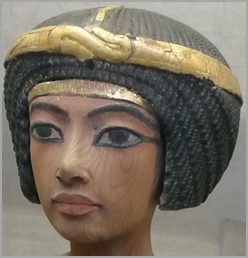 |
 |
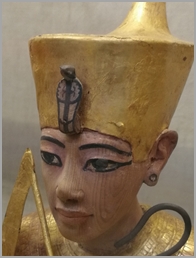 |
|
||||||||||||||||||||||||||||||||||||||||||||||||||||||||||||||||||||||||||||||||||||||||||||||||||||||||||||||||||||||||||||||||||||||||||||
|
|
|||||||||||||||||||||||||||||||||||||||||||||||||||||||||||||||||||||||||||||||||||||||||||||||||||||||||||||||||||||||||||||||||||||||||||||||
|
[107]
|
[108]
|
[109]
|
[110]
|
[111]
|
[112]
|
|
|||||||||||||||||||||||||||||||||||||||||||||||||||||||||||||||||||||||||||||||||||||||||||||||||||||||||||||||||||||||||||||||||||||||||
|
|
|||||||||||||||||||||||||||||||||||||||||||||||||||||||||||||||||||||||||||||||||||||||||||||||||||||||||||||||||||||||||||||||||||||||||||||||
|
|
|||||||||||||||||||||||||||||||||||||||||||||||||||||||||||||||||||||||||||||||||||||||||||||||||||||||||||||||||||||||||||||||||||||||||||||||
|
|
|||||||||||||||||||||||||||||||||||||||||||||||||||||||||||||||||||||||||||||||||||||||||||||||||||||||||||||||||||||||||||||||||||||||||||||||
|
[113]
|
[114]
|
[115]
|
[116]
|
[117]
|
[118]
|
[119]
|
[120]
|
[121]
|
[122]
|
|
|||||||||||||||||||||||||||||||||||||||||||||||||||||||||||||||||||||||||||||||||||||||||||||||||||||||||||||||||||||||||||||||||||||
|
|
|||||||||||||||||||||||||||||||||||||||||||||||||||||||||||||||||||||||||||||||||||||||||||||||||||||||||||||||||||||||||||||||||||||||||||||||
|
|
|||||||||||||||||||||||||||||||||||||||||||||||||||||||||||||||||||||||||||||||||||||||||||||||||||||||||||||||||||||||||||||||||||||||||||||||
|
|
|||||||||||||||||||||||||||||||||||||||||||||||||||||||||||||||||||||||||||||||||||||||||||||||||||||||||||||||||||||||||||||||||||||||||||||||
|
[123]
|
[124]
|
[125]
|
|
||||||||||||||||||||||||||||||||||||||||||||||||||||||||||||||||||||||||||||||||||||||||||||||||||||||||||||||||||||||||||||||||||||||||||||
|
|
|||||||||||||||||||||||||||||||||||||||||||||||||||||||||||||||||||||||||||||||||||||||||||||||||||||||||||||||||||||||||||||||||||||||||||||||
|
[65] Ahhotep (Brooklyn: BM 37.122E)
[66] Kenamen (Brooklyn, BM 1996.89)
[67] Humay (Manchester, MM 2953)
[68] Shabtis and model tools for Yuya and Thuya (Cairo Museum)
[69] Faience and wood model hoe and basket (art market, London)
[70] Bronze and wood model hoes and a yoke (Collection K)
[71] Ahmose (London, BM EA 32191)
[72]-[78] Amenhotep II (examples in Cairo and also New York, MMA 66.99.158)
[79]-[84] Thuthmose IV (New York, MMA 30.8.27; Cairo Museum, CG 46160; Boston, MFA 03.1098; Boston, MFA 39.8.28; Boston, MFA 03.1101; New York, MMA 30.8.25 & 30.8.26a/b)
[85] Amenemhat (Brooklyn, BM 50.128)
[86] Nebwahib(?) (New York MMA, 37.5.1)
[87] Anonymous (Brooklyn, BM 37.121E)
[88] Sati (Brooklyn, BM 37.123E)
[89]-[93] Amenhotep III (London, BM EA 54398; Chicago, OI E16738; Liverpool (WM M13937;
Paris, Louvre N 467+E 27488; Collection K)
[94]-[96] Akhenaten (New York, MMA 1982.50; New York, MMA 47.57.2; New York, MMA 66.99.37)
[97] Isis (New York, MMA 66.99.38)
[98] Paatenemhat (Chiddingstone, EDECC 01.0328)
[99]-[109] Tutankhamen (Cairo Museum) Photographs: courtesy of DvB and GJ
[110] Tjay (Manchester, MM 6962)
[111] Hori II (Collection A)
[112] Taemwadjes (Manchester MM 4037)
[113] Meryre (New York, MMA 44.4.71)
[114] Reia (Leiden, RMO AST 62)
[115] Keni (art market, London)
[116] Nakhtamen (Leiden, RMO L.VII.6)
[117]-[122] Seti I (Liverpool, WM M13580; Liverpool, WM 42.18.23; Chiddingstone, EDECC
01.0308; Paris, Louvre N 472; London, BM EA 37579; art market, London)
[123]-[124] Ramesses IV (Collection K); Ramesses VI (Liverpool, WM M13943)
[125] A collage of shabtis wearing 'bling'
|
|
||||||||||||||||||||||||||||||||||||||||||||||||||||||||||||||||||||||||||||||||||||||||||||||||||||||||||||||||||||||||||||||||||||||||||||||
|
|
|||||||||||||||||||||||||||||||||||||||||||||||||||||||||||||||||||||||||||||||||||||||||||||||||||||||||||||||||||||||||||||||||||||||||||||||
|
|
|
|
|
|
|
|
|
|
|
|
|
|
|
|
|
|
|
|
|
|
|
|
|
|
|
|
|
|
|
|
|
|
|
|
|
|
|
|
|
|
|
|
|
|
|
|
|
|
|
|
|
|
|
|
|
|
|
|
|
|
|
|
|
|
|
|
|
|
|
|
|
|
|
|
|
|
|
|
|
|
|
|
|
|
|
|
|
|
|
|
|
|
|
|
|
|
|
|
|
|
|
|
|
|
|
|
|
|
|
|
|
|
|
|
|
|
|
|
|
|
|
|
|
|
|
|
|
|
|
|
|
|
|
|
|
|
|
|
|
|
|
|
|
